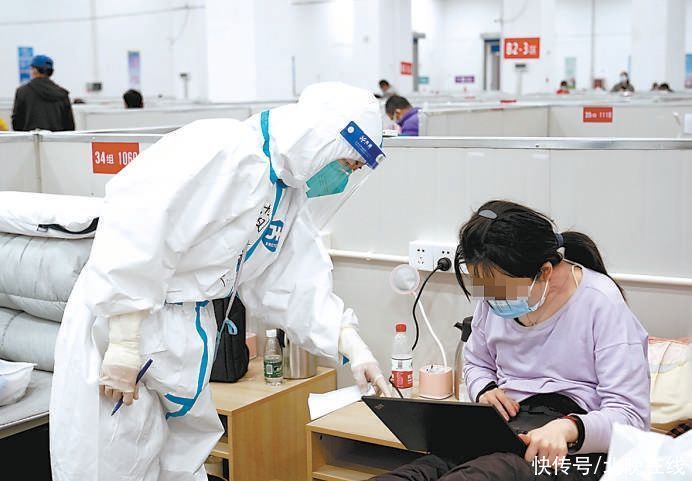內容目錄
At the press conference on epidemic prevention and control held in Shanghai this morning, as of 24:00 yesterday, 157 severe patients and 18 critically ill patients had been treated in designated medical institutions. There were 12 new local deaths yesterday, with an average age of 88.2 years. From 0:00 on February 26 to 24:00 yesterday, a total of 48 deaths have occurred. This once again sounded the alarm, Omicron is not a “big flu”, especially in Shanghai, where the aging degree is over 36%, the elderly people aged 80 and above are close to 830,000, and the absolute number of patients with underlying diseases is huge. Treating critically ill patients and doing everything possible to reduce the fatality rate are the top priorities at present.

With the recovery and discharge of mild and asymptomatic infected patients in Fangcang shelter hospitals and the increase in the number of ordinary and severe patients, Shanghai Lingang Fangcang shelter hospital’s Some beds are being upgraded and will be used to receive confirmed cases above the common type. It is reported that of the 13,600 beds in the Lingang Fangcang shelter hospital, about 2,000 are planned to be transformed. The picture shows the communication between medical staff and patients in Lingang Fangcang shelter hospital. Xinhua News Agency
The number of newly infected people is still high
At a press conference today, the Shanghai Municipal Health Commission stated that from the recent epidemic data, it can be seen that the current The epidemic situation in Shanghai is still severe and complicated. The number of new positive infections is still high and fluctuates at a high level. Generally, it was found in the closed control area, control area, and centralized isolation point. Yesterday, these areas increased by a large margin. One is that Pudong New Area increased by about 3,000 cases compared with the previous day, Songjiang District increased by about 2,000 cases compared with the previous day, Baoshan District increased by about 1,000 cases compared with the previous day, Huangpu District increased by about 800 cases compared with the previous day, and Yangpu District increased by about 800 cases compared with the previous day. The reason is related to the recent common occurrence of shared bathrooms and kitchens in communities, especially some old communities, and the clustered epidemics in construction sites and enterprises.
Yesterday, 1,875 local confirmed cases in the city were discharged from hospital, and 20,768 asymptomatic patients were released from centralized isolation and medical observation, and they will return to their places of residence for health monitoring.
12 new local deaths
The press conference reported that from 0:00 to 24:00 yesterday, 2,736 new local confirmed cases and 20,634 local asymptomatic infections were reported in Shanghai.
12 new local deaths. The average age was 88.2 years old, and the oldest was 99 years old. All 12 patients had severe chronic multi-organ diseases, including bronchial asthma, respiratory failure, coronary heart disease, cardiac insufficiency, arrhythmia, hypertension, sequelae of cerebral infarction, and Alzheimer’s disease. After the patient was admitted to the hospital, due to the serious underlying disease, the disease progressed rapidly, and the rescue was invalid. The immediate cause of death is the underlying disease.
The number of severe cases exceeded 100
As of April 20, the cumulative number of infected people in Shanghai exceeded 400,000. From 0:00 on February 26 to 24:00 yesterday, a total of 37,408 local confirmed cases, 12,350 were cured and discharged, 25,010 were treated in hospital (including 157 severe cases and 18 critical cases), and 48 died. For Shanghai, which has a relatively high degree of aging, a set of data reflects the current treatment pressure: only in the Shanghai Public Health Clinical Center, since March, a total of 93 elderly people between the ages of 90 and 100 have been treated, and those over 100 have been treated. 5 seniors. At present, nearly 30% of the hospitalized patients are over 60 years old. More than 60% of the patients with underlying diseases, and more than 40% of the more than 1,000 patients with severe underlying diseases currently in the hospital have more than 3 underlying diseases.
“One person, one strategy” for treatment
One of the “main battlefield” Shanghai Public Health Clinical Center, six hospital intensive care teams have settled in, and intensive care experts from many places have fought hard , Applying the previous treatment experience, the goal is to do everything possible to reduce the fatality rate.
Member of the Shanghai Working Group of the Joint Prevention and Control Mechanism Comprehensive Group of the State Council and Director of the Medical Administration and Hospital Administration Bureau of the National Health and Health Commission, Ma Xudong, said that at present, critical care medical teams in many places are going all out to adopt comprehensive strategies to treat critically ill patients. Rescue: All critically ill patients will be admitted to high-level city-level designated hospitals for treatment; domestic experts with rich treatment experience will set up a roving expert group with Shanghai experts to conduct roving guidance in Fangcang shelter hospitals and designated hospitals to identify critically ill patients and high-risk patients at an early stage. Risk groups; early intervention to prevent mild cases from turning into severe cases; list-based management of critically ill patients, and “one person, one policy” for treatment; new coronary pneumonia and basic disease treatment are equally important.
(Original title: More than 400,000 infected people in severe cases, how does Shanghai conquer the “fortress” of severe cases)
Source: Beijing Evening News According to CCTV Xinhua News Agency Health Shanghai
Process editor: u027